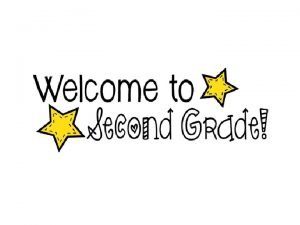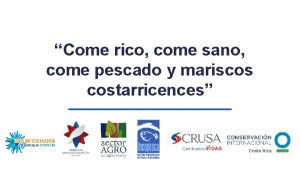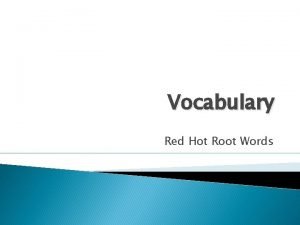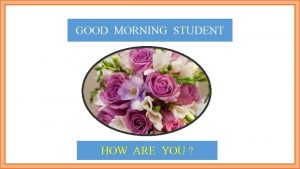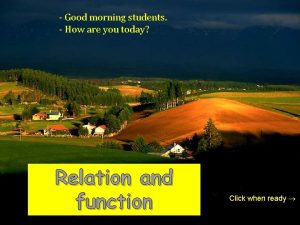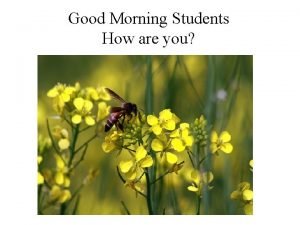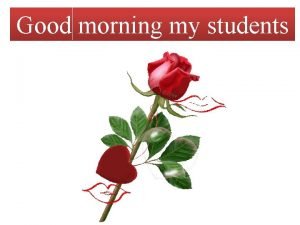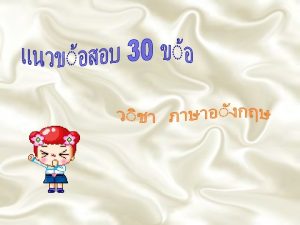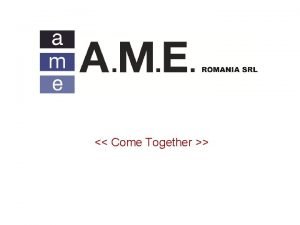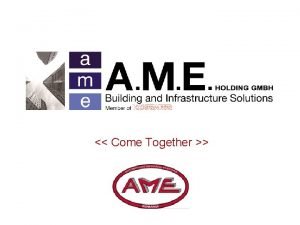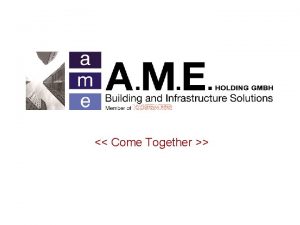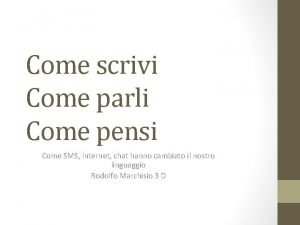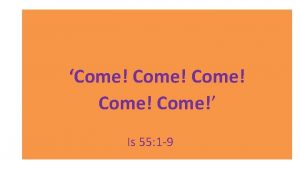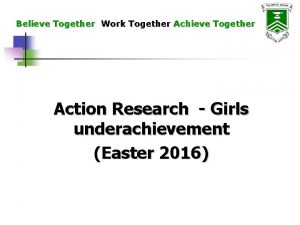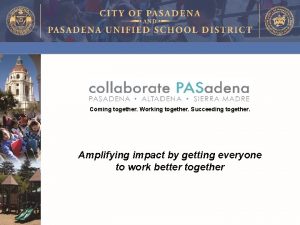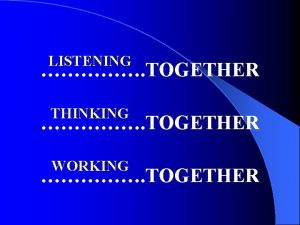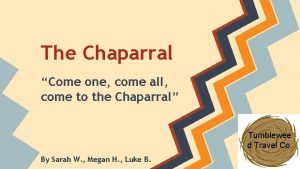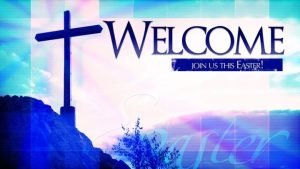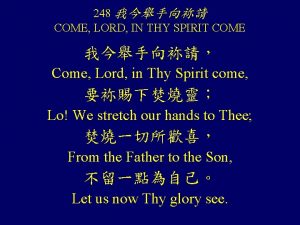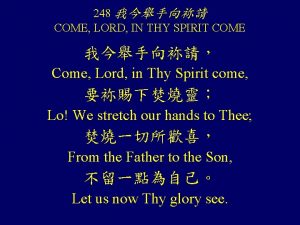Morning Meeting Students come together each morning to

















- Slides: 17


Morning Meeting • Students come together each morning to feel welcomed, respected and valued as a member of our class. The four components are: – Greeting – Sharing – Activity – Morning Message

STEM is a way of thinking and learning. In second grade we use the terms I notice and I wonder to make observations, discuss background knowledge, and inquire about things we want to learn more about in all subject areas. Field Study: Connecticut’s Habitats (Pond, Meadow and Forest)

This year is our second year of implementing an integrated curriculum. Our curriculum is aligned with the NGSS (Next Generation Science Standards). Reading, writing, social studies, and whenever possible, mathematics, are all connected through structure and materials. • Our units include: 1 - Systems & Structures of a Learning Community 2 -Matter and Its Interactions 3 - Earth’s Systems: Stability and Change 4 - Biological Evolution: Unity and Diversity

Reading and Language Arts • We combine whole group and small group instruction to incorporate the four anchor standards: reading, writing, speaking and listening. • Study materials are rooted in our NGSS

Writer’s Workshop Contains 3 main components: • Mini Lesson (Direct Instruction) • Independent Writing and Conferencing • Sharing Individual folders include: heart maps, personal word walls, writing strategies, and writing pieces in progress. The 3 Units we will focus on this year will be: Narrative, Informational and Opinion Writing

What do Mathematicians do? • compute • solve problems • create models to show their thinking • use tools as they are exploring and solving problems • analyze their data looking for patterns or insights • communicate mathematical reasoning

Math Lab Structure • • • Number Talks Developing Strategies Math Workshop model Problem Solving Journals Guided Math and Centers My solution is… The strategy I used was… I agree with you because… I respectfully disagree because…

Key Math Areas of Focus for Grade 2 • Represent and solve • Use place value problems involving understanding and addition and properties of operations subtraction to add and subtract • Add and subtract within • Measure and estimate 20 lengths in standard units Relate addition • Understand place value and subtraction to length

Engineering Design Process • Introduction to engineering design process • Classroom learning is supported by weekly instruction in the science lab. • Engineering units – Designing hand pollinators – Improving a Play Dough process

Social Development • Second Step • Habits of Mind/Growth Mindset • Bucket Filling • Responsive Classroom Hopes and Dreams, Interactive Modeling, Logical Consequences, School-wide expectations

Social Studies Civics Pre K-5 Learning Objectives • Develop an understanding of self, social standards and rules, along with the rights and responsibilities of citizens. • Develop a positive self-concept. • Develop an understanding of rules and responsibilities within communities. • Determine ways one can address problems individually and collectively to improve the communities to which we belong. • Identify, understand, and regulate emotions of self and others. • Develop positive interpersonal relationships.

Social Studies Geography Pre. K-5 Learning Objectives • Explore maps and their purpose. • Identify where one lives and locate important places on current and historical maps. • Use maps to identify important information using symbols, legends, and keys. • Give and follow directions. • Create a variety of maps.

Specials • Students go to specials daily, including: – Art – Music – Physical Education – Library – Computer Lab – Science Lab

Homework Policy • Homework Folder: Check daily for notices and student work samples. Return folder to school each day. • Weekly homework packet sent Monday to be returned Friday including: – Daily Reading Log (20 minutes) – Math Review – Weekly Spelling List (quiz on Friday) – Content Area Connections


We look forward to working with you and your children this year!!! Mrs. Matthews, Ms. Jacklin and Mrs. Bottaro
 Come together meeting
Come together meeting Come rico come sano come pescado
Come rico come sano come pescado Opvoedbelasting
Opvoedbelasting Why was/were rizal called the champion of filipino students
Why was/were rizal called the champion of filipino students Today meeting or today's meeting
Today meeting or today's meeting Meeting objective
Meeting objective What is meeting and types of meeting
What is meeting and types of meeting Types of meeting
Types of meeting Col to come together with great force to clash
Col to come together with great force to clash Good evening teacher
Good evening teacher Good morning students how are you today
Good morning students how are you today Good morning students
Good morning students Good morning and welcome back
Good morning and welcome back Dear boys and girls
Dear boys and girls Good morning students how are you
Good morning students how are you Teacher good morning students
Teacher good morning students Good morning my lovely students
Good morning my lovely students Good morning madam said the students to the teacher
Good morning madam said the students to the teacher
